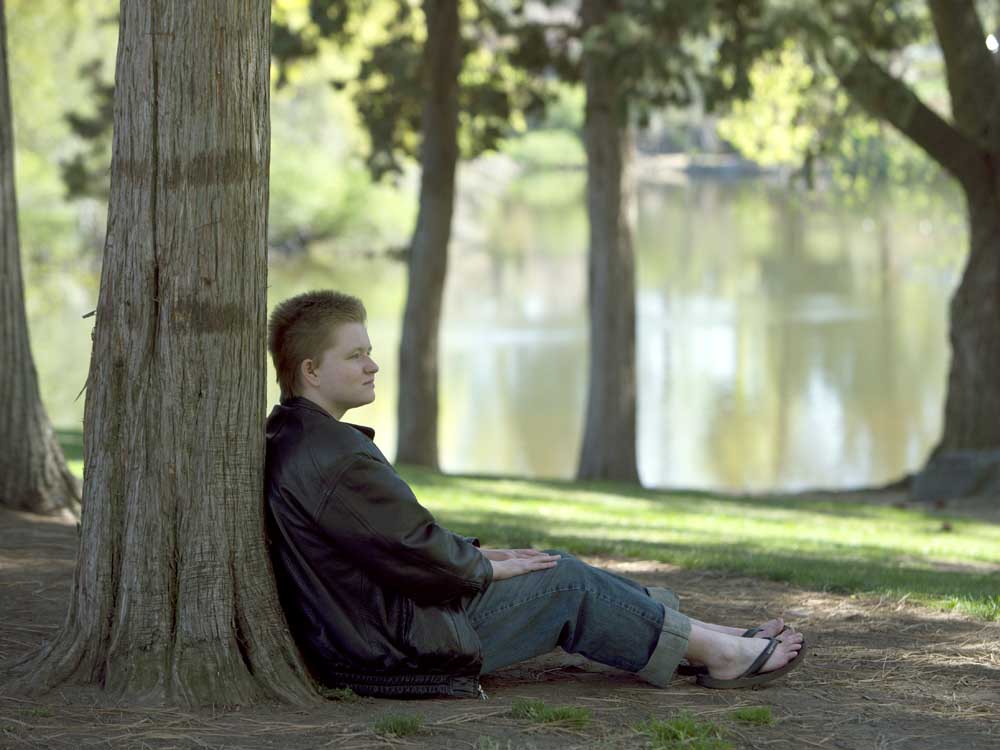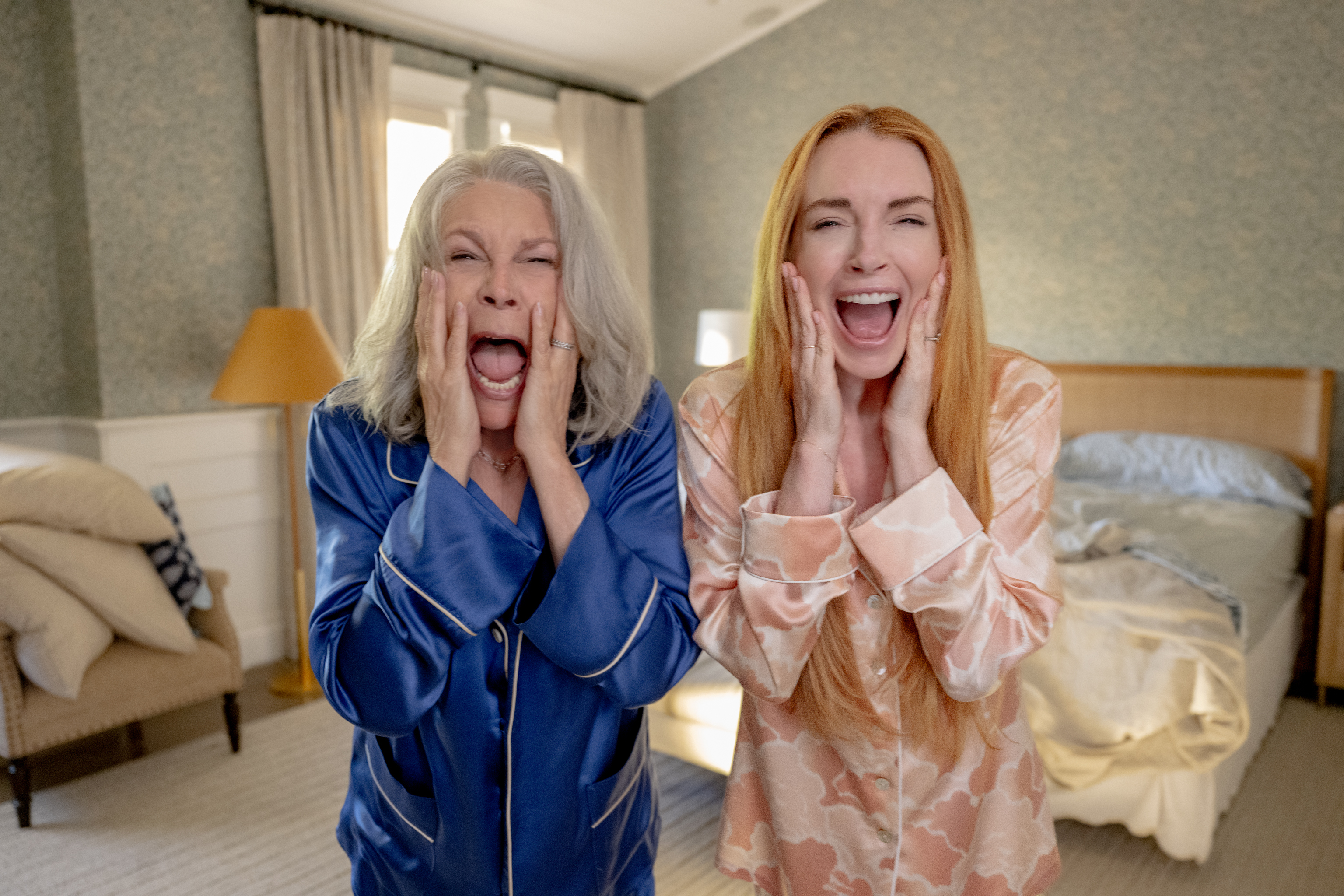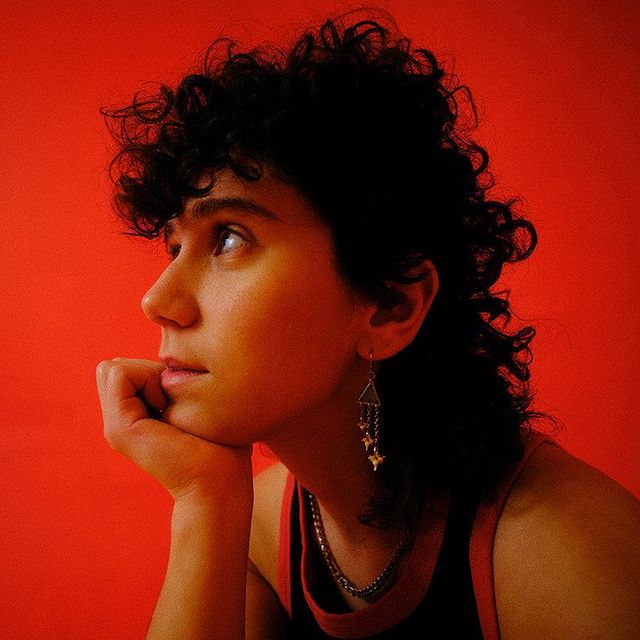Asexual group has formed in Bend
Published 12:00 am Friday, April 15, 2016

- Andy Tullis / The BulletinMarian Hansell, a transgender man who is asexual, sits in Drake Park.
Marian Hansell has identified with masculinity for most of his life, even though he was born female. A couple of months ago, the transgender man had another realization: He’s asexual.
When the Central Oregon Community College student befriended a few people who identified as asexual at the college’s LGBTQ & Ally Club, he learned new terms: allosexuality, feeling sexual attraction toward others; and asexuality, possessing a very low or nonexistent attraction toward anyone.
Trending
“It’s like I didn’t know I needed glasses until my friend let me wear hers,” Hansell said with a laugh.
Gender and sex had long been distinct in his mind. His own asexuality, which was always there, has now become clear.
Asexuality is not a new sexual orientation. However, the identity has only recently been named in reference to a portion of the population. Additionally, the American Psychiatric Association, in its 2015 edition of the Diagnostic and Statistical Manual of Mental Disorders, declassified asexuality as a hypoactive sexual disorder. The change acknowledged it’s a rare — but normal — designation.
There’s no consensus on the percentage of population in the United States or around the world who identify as asexual.
According to a 2004 report published in the Journal of Sex Research, an estimated 1 percent of Britain’s population considered themselves asexual at the time. However, the results aren’t satisfactorily conclusive. The survey data, a touchstone of researchers exploring the reach of the asexual community around the world as recently as 2013, is derived from surveys in the U.K. Researchers debate the accuracy of respondents’ answers since the survey was done in person as well as with questionnaires. Fresh research does not appear to have been conducted in the U.K. or in the U.S.
Soon after Hansell’s epiphany, he joined Bend’s Ace Meetup group. It was initiated by a 21-year-old woman named Katie in September. Katie, a COCC student and part-time medical worker, declined to give her last name. She wants to forge a community without broadcasting her Ace status.
Trending
Beaverton resident Sarah Neufeld, 34, who identifies as asexual, said she learned the sexual orientated existed just five years ago. Neufeld started a Portland Ace Meetup group in 2011 that now includes 239 members — some who drive from Central Oregon.
For many new members, it’s the first time they’ve met self-identifying Aces in person, she said via email.
Neufeld thinks there may be so little asexuality research because “it’s the easiest sexual orientation to camouflage.”
For any research that does exist, she gives credit to the Ace community becoming vocal, spreading awareness so others know they are not alone. Neufeld thinks the often-cited 1 percent statistic is accurate.
Katie reached out to Neufeld’s group to ask for advice on how to start her own.
The Bend Ace group has 16 members, although most are inactive. That’s not the case with Hansell, who recently sat with Katie at a local coffee shop.
Fast friends, the two swapped Ace stories. “Ace” is the phonetic first syllable of “asexual”; it’s also conveniently devoid of the word “sex.” They laughed with happy incredulity when the other echoed similar thoughts and experiences.
Invisibility
The pressing issue for Aces is a matter of visibility. The two members who talked to The Bulletin said they would have been spared a lot of grief and confusion if they’d sooner had the tools the Ace identity and vocabulary now grants them.
Each identifies with a distinct notch on the Ace spectrum. Katie is an asexual aromantic, meaning she “wants to live with a best friend forever. She registers platonic love but not romance. Hansell is an asexual biromantic — which means he’s “really down with holding hands, but that’s about it.”
Some Aces compare the act of having sex to performing a menial task, but they will do it to please a partner. For extreme asexuals, the idea of having sex or even kissing is repulsive, according to the Asexuality Visibility and Education Network. AVEN counts 81,000 global members.
Coming-out stories
Hansell doesn’t want his parents to know he identifies as asexual, even though they were supportive when he told them he wanted to transition. Hansell began hormone-replacement therapy two months ago to become more masculine. While he said his parents would also accept his asexuality, he feared they might be disappointed — they want to be grandparents. He hopes his older sister will grant them that status.
Katie has read some Aces’ online accounts of coming out. She describes them as “horror stories.”
Some commenters reported being accused of not knowing what they were talking about because they’d never had sex.
“If you said to a gay person that they’re only gay because they haven’t met the right straight person, people would say that’s awful and homophobic,” Hansell said.
While Katie is adamant her parents wouldn’t disown her, she doesn’t want to have the conversation. “But who knows! They might have a good reaction,” she said.
Get in where you fit in
Hansell and Katie regularly attend COCC’s weekly LGBTQ & Ally Club, where they said they feel welcomed by members and Chris Rubio, the club’s faculty adviser and an associate English professor. While supportive, Rubio declined to comment for this story. She wrote in an email she knows little about the asexual community. She recommended Karen Roth, director of the COCC multicultural center. Roth said she’s familiar with the concept of asexuality, yet she’d not heard of the community’s Ace moniker and was glad to learn there is a local Ace Meetup group.
At COCC, Roth is a member of the school’s Safe Zone program, which connects LGBTQ students with supportive faculty. In hearing about Hansell’s asexual revelation, Roth said, “When you can find a group that reflects what you’ve been feeling, that is so self-affirming.”
Since Roth moved here 10 years ago, she’s been aware of strong local organizations that support LGBTQ community, including the local chapter of PFLAG, a pro-LGBTQ group that allies parents and friends, and the Human Dignity Coalition.
“I think for a while there has been recognition (of Aces) among LGBTQ advocates in our community,” she said. “Sexual orientation, gender identity are broad terms in which individuals express themselves.”
Another such group is Stars & Rainbows. Founded by Cliff Cook, the former Central Oregon Pride Festival director and current treasurer of the Human Dignity Coalition and secretary of the local PFLAG chapter, the group enjoys 757 members.
Cook said he’s very pleased that Hansell and Katie have been welcomed by the local LGBTQ community. When Cook moved to Bend 24 years ago, he was struck by a sense of tolerance of “people who are different,” even by the area’s more conservative population, the product of a “you leave me alone, I’ll leave you alone — what you do (or don’t do) in your bedroom is up to you” brand of libertarianism.
Broader horizons
Hansell and Katie wonder where the other Aces are in Bend. If the study published in the Journal of Sex Research is accurate, roughly 800 Bendites may be asexual. And they may or may not be acquainted with the term.
Hansell and Katie, for separate reasons, are moving to Eugene later this year. Hansell has applied to the University of Oregon. Katie will continue working in the medical field while she contemplates further education.
There is not presently an Ace Meetup group in Eugene, but six Meetup users have indicated they’re interested in joining one, should someone take the initiative. Hansell and Katie said they will want to connect with Eugene Aces, though Katie says she’s a lousy leader who’s shy about holding meet-ups. For the sake of visibility, she wears a black ring on her right middle finger, the Ace community’s signifier. Hansell said he wants to get one for himself.
— Reporter: 541-617-7816, pmadsen@bendbulletin.com








